

E-Books → Coral Reefs and Climate Change Science and Management
Published by: voska89 on 3-08-2022, 23:28 |  0
0
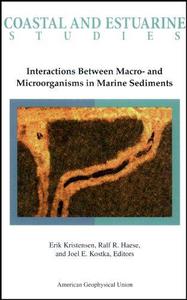
Coral Reefs and Climate Change: Science and Management By
2006 | 246 Pages | ISBN: 0875903592 | PDF | 6 MB
Published by the American Geophysical Union as part of the Coastal and Estuarine Studies Series.The effects of increased atmospheric carbon dioxide and related climate change on shallow coral reefs are gaining considerable attention for scientific and economic reasons worldwide. Although increased scientific research has improved our understanding of the response of coral reefs to climate change, we still lack key information that can help guide reef management. Research and monitoring of coral reef ecosystems over the past few decades have documented two major threats related to increasing concentrations of atmospheric CO2: (1) increased sea surface temperatures and (2) increased seawater acidity (lower pH). Higher atmospheric CO2 levels have resulted in rising sea surface temperatures and proven to be an acute threat to corals and other reef-dwelling organisms. Short periods (days) of elevated sea surface temperatures by as little as 1-2°C above the normal maximum temperature has led to more frequent and more widespread episodes of coral bleaching-the expulsion of symbiotic algae. A more chronic consequence of increasing atmospheric CO2 is the lowering of pH of surface waters, which affects the rate at which corals and other reef organisms secrete and build their calcium carbonate skeletons. Average pH of the surface ocean has already decreased by an estimated 0.1 unit since preindustrial times, and will continue to decline in concert with rising atmospheric CO2. These climate-related Stressors combined with other direct anthropogenic assaults, such as overfishing and pollution, weaken reef organisms and increase their susceptibility to disease.Content: Chapter 1 Corals and Climate Change: An Introduction (pages 1-4): John E. N. Veron and Jonathan PhinneyChapter 2 Tropical Coastal Ecosystems and Climate Change Prediction: Global and Local Risks (pages 5-32): Terry Done and Roger JonesChapter 3 Coral Reef Records of Past Climatic Change (pages 33-54): C. Mark Eakin and Andrea G. GrottoliChapter 4 The Cell Physiology of Coral Bleaching (pages 55-71): Sophie G. Dove and Ove Hoegh?GuldbergChapter 5 Coral Reefs and Changing Seawater Carbonate Chemistry (pages 73-110): Joan A. Kleypas and Chris LangdonChapter 6 Analyzing the Relationship Between Ocean Temperature Anomalies and Coral Disease Outbreaks at Broad Spatial Scales (pages 111-128): Elizabeth R. Selig, C. Drew Harvell, John F. Bruno, Bette L. Willis, Cathie A. Page, Kenneth S. Casey and Hugh SweatmanChapter 7 A Coral Population Response (CPR) Model for Thermal Stress (pages 129-144): R. van Woesik and S. KoksalChapter 8 The Hydrodynamics of a Bleaching Event: Implications for Management and Monitoring (pages 145-161): William Skirving, Mal Heron and Scott HeronChapter 9 Identifying Coral Bleaching Remotely Via Coral Reef Watch - Improved Integration and Implications for Changing Climate (pages 163-180): A. E. Strong, F. Arzayus, W. Skirving and S. F. HeronChapter 10 Management Response to a Bleaching Event (pages 181-206): David Obura, Billy Causey and Julie ChurchChapter 11 Marine Protected Area Planning in a Changing Climate (pages 207-221): Rodney V. Salm, Terry Done and Elizabeth McLeodChapter 12 Adapting Coral Reef Management in the Face of Climate Change (pages 223-241): Paul Marshall and Heidi Schuttenberg
E-Books → Copyright Protection What It Is, How It Works
Published by: voska89 on 3-08-2022, 23:28 |  0
0
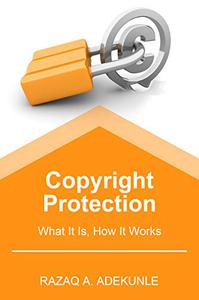
Copyright Protection: What It Is, How It Works by RAZAQ ADEKUNLE
English | 2020 | ISBN: N/A | ASIN: B08RJRJ1VH | 162 pages | EPUB | 0.19 Mb
It is essential that all screenwriters looking to profit from their work understand copyright law. If the legal procedures necessary to protect your work are not undertaken, it will be impossible to prove that your work is your own. Copyright protection is granted for the expression of ideas and not for the ideas themselves. A person having an idea regarding a flying horse communicates the idea to another who creates a sketch of the same.
E-Books → Copepods in Aquaculture
Published by: voska89 on 3-08-2022, 23:28 |  0
0

Copepods in Aquaculture By
2005 | 270 Pages | ISBN: 0813800668 | PDF | 5 MB
The importance of copepods in aquaculture has long been recognized, especially in the larval rearing of many marine fishes. This timely publication provides a single source of information on copepod biology, culture methods and practical use in marine finfish hatcheries.Originating out of a workshop held on copepods by the Oceanic Institute in Hawaii, this proceedings includes review articles and papers presented by leading international experts in copepod biology and aquaculture. It is a seminal work that integrates the most up-to-date information on selecting copepod species, effects of algal species on reproduction, ways to increase production, the nutritional value of copepods, behavioral characteristics of copepods, potential use of copepod nauplii and eggs, and their application to larval rearing of various marine finfish species.Content: Chapter 1 Calanoid Copepods, Resting Eggs, and Aquaculture (pages 3-10): Nancy H. MarcusChapter 2 The Potential to Mass?Culture Harpacticoid Copepods for Use as Food for Larval Fish (pages 11-24): John W. FleegerChapter 3 Symbiotic Copepods as Live Feed in Marine Finfish Rearing (pages 25-30): Ju?Shey HoChapter 4 Birth Control Effects of Diatoms on Copepod Reproduction: Implications for Aquaculture Studies (pages 31-48): Adrianna IanoraChapter 5 Maximizing the Nutritional Values of Copepods in Aquaculture: Managed Versus Balanced Nutrition (pages 49-60): G. S. Kleppel, Sarah E. Hazzard and Carol A. BurkartChapter 6 Formulated Feeds for Harpacticoid Copepods: Implications for Population Growth and Fatty Acid Composition (pages 61-74): Adelaide Rhodes and Leon BoydChapter 7 A Brief Review of Mass Culture Copepods Used for Fish Food in Japanese Mariculture and A Proposed Plan to Use High Biomass Natural Populations of Brackish?Water Copepods (pages 75-90): Shin?Ichi UyeChapter 8 Behavioral Characteristics of Copepods That Affect Their Suitability as Food for Larval Fishes (pages 91-106): Edward J. BuskeyChapter 9 Suitability of the Copepod Gladioferens Imparipes for Intensive Cultivation for Aquaculture (pages 107-118): Robert J. Rippingale and Michael F. PayneChapter 10 Development of Feeding Mechanics in Marine Fish Larvae and the Swimming Behavior of Zooplankton Prey: Implications for Rearing Marine Fishes (pages 119-132): Ralph G. Turingan, Jessica L. Beck, Justin M. Krebs and Jason D. LicameleChapter 11 Copepods as Live Prey: A Review of Factors That Influence the Feeding Success of Marine Fish Larvae (pages 133-150): Edward J. ChesneyChapter 12 Intensive and Extensive Production Techniques to Provide Copepod Nauplii for Feeding Larval Red Snapper Lutjanus Campechanus (pages 151-168): Ronald P. Phelps, Gede S. Sumiarsa, Emily E. Lipman, Hsiang?Pin Lan, Komarey Kao Moss and Allen D. DavisChapter 13 Studies on the Use of Copepods in the Semi?Intensive Seed Production of Grouper Epinephelus Coioides (pages 169-182): Joebert D. Toledo, Ma. Salvacion Golez and Atsushi OhnoChapter 14 Culture of Copepods and Applications to Marine Finfish Larval Rearing in Taiwan (pages 183-194): Huei?Meei Su, Shin?Hong Cheng, Tzyy?Ing Chen and Mao?Sen SuChapter 15 Copepods as A Live Feed for Striped Trumpeter Latris Lineata Larvae (pages 195-208): David T. Morehead, Stephen C. Battaglene, Ephrime B. Metillo, Matthew P. Bransden and Graeme A. DunstanChapter 16 Intensive Cultivation of A Subtropical Paracalanid Copepod, Parvocalanus sp., as Prey for Small Marine Fish Larvae (pages 209-224): Robin J. Shields, Tomonari Kotani, Augustin Molnar, Kimo Marion, Jon Kobashigawa and Larren TangChapter 17 Characterization of an Extensive Zooplankton Culture System Coupled With Intensive Larval Rearing of Red Snapper Lutjanus Campechanus (pages 225-244): John T. Ogle, Jason T. Lemus, L. Casey Nicholson, Donald N. Barnes and Jeffrey M. LotzChapter 18 Culture of Copepods and Applications to Marine Finfish Larval Rearing Workshop Discussion Summary (pages 245-253): Patricia J. O'Bryen and Cheng?Sheng Lee
E-Books → Cooking in the Lowcountry From The Old Post Office Restaurant Spanish Moss Warm Nights and Fabulous Southern Food
Published by: voska89 on 3-08-2022, 23:27 |  0
0
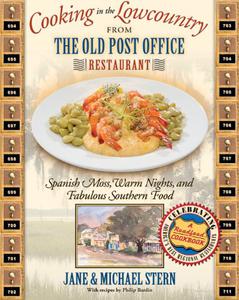
Jane Stern, Michael Stern, "Cooking in the Lowcountry From The Old Post Office Restaurant: Spanish Moss Warm Nights and Fabulous Southern Food"
English | 2004 | ISBN: 1401601464 | EPUB | pages: 212 | 1.4 mb
The exquisite menu at The Old Post Office Restaurant on Edisto Island, SC, has garnered this one-of-a-kind establishment legions of fans from around the country. It has been written up in the New York Times, Travel and Leisure, USA Today, Wine Spectator and Gourmet.
E-Books → Conversations, Volume 3
Published by: voska89 on 3-08-2022, 23:27 |  0
0

Jorge Luis Borges, Osvaldo Ferrari, Anthony Edkins, "Conversations, Volume 3"
English | 2017 | pages: 230 | ISBN: 0857424238 | PDF | 1,2 mb
"I wrote a poem this morning, and one of the themes of the poem is that languages are not equivalent, that each language is a new way of feeling the world."-Jorge Luis Borges
E-Books → Convergence of Probability Measures, Second Edition
Published by: voska89 on 3-08-2022, 23:27 |  0
0
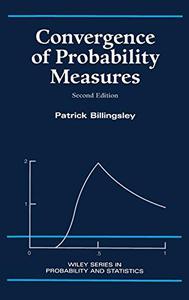
Convergence of Probability Measures, Second Edition By Patrick Billingsley(auth.)
1999 | 286 Pages | ISBN: 0471197459 | PDF | 11 MB
A new look at weak-convergence methods in metric spaces-from a master of probability theory In this new edition, Patrick Billingsley updates his classic work Convergence of Probability Measures to reflect developments of the past thirty years. Widely known for his straightforward approach and reader-friendly style, Dr. Billingsley presents a clear, precise, up-to-date account of probability limit theory in metric spaces. He incorporates many examples and applications that illustrate the power and utility of this theory in a range of disciplines-from analysis and number theory to statistics, engineering, economics, and population biology. With an emphasis on the simplicity of the mathematics and smooth transitions between topics, the Second Edition boasts major revisions of the sections on dependent random variables as well as new sections on relative measure, on lacunary trigonometric series, and on the Poisson-Dirichlet distribution as a description of the long cycles in permutations and the large divisors of integers. Assuming only standard measure-theoretic probability and metric-space topology, Convergence of Probability Measures provides statisticians and mathematicians with basic tools of probability theory as well as a springboard to the "industrial-strength" literature available today.Content: Chapter 1 Weak Convergence in Metric Spaces (pages 7-79): Chapter 2 The Space C (pages 80-120): Chapter 3 The Space D (pages 121-179): Chapter 4 Dependent Variables (pages 180-206): Chapter 5 Other Modes of Convergence (pages 207-235):
E-Books → Controllership The Work of the Managerial Accountant, Eighth Edition
Published by: voska89 on 3-08-2022, 23:27 |  0
0

Controllership: The Work of the Managerial Accountant, Eighth Edition By Steven M. Bragg(auth.)
2009 | 812 Pages | ISBN: 0470481986 | PDF | 8 MB
Today's controllers are no longer seen as technicians who process transactions; they are now seen as business executives with a wide-ranging knowledge of total business operations, best practices, and corporate strategy. Providing a comprehensive overview of the roles and responsibilities of controllers in today's environment, this Eighth Edition of Controllership continues to provide controllers and vice presidents of finance with all aspects of management accounting from the controller's perspective, including internal control, profit planning, cost control, inventory, and financial disclosure.Content: Chapter 1 Accounting in the Corporation (pages 1-11): Chapter 2 Controller's Responsibilities (pages 13-22): Chapter 3 Cost Accounting and Costing Systems (pages 23-56): Chapter 4 Ratio and Trend Analysis (pages 57-88): Chapter 5 Internal Control Systems (pages 89-111): Chapter 6 Internal Audit Function (pages 113-121): Chapter 7 Recruiting, Training, and Supervision (pages 123-135): Chapter 8 Controller's Role in Investor Relations (pages 137-150): Chapter 9 Business Plans and Planning: Interrelationship of Plans, Strategic Planning (pages 151-179): Chapter 10 Financial Impact of the Strategic Plan: Long?Range Financial Plan (pages 181-199): Chapter 11 Profit Planning: Annual Plan (pages 201-224): Chapter 12 Profit Planning: Supporting Financial Analysis for the Annual Plan (pages 225-258): Chapter 13 Taxation Planning (pages 259-273): Chapter 14 General Discussion of Standards (pages 275-294): Chapter 15 Planning and Control of Sales (pages 295-337): Chapter 16 Planning and Control of Marketing Expenses (pages 339-365): Chapter 17 Planning and Control of Manufacturing Costs: Direct Material and Direct Labor (pages 367-387): Chapter 18 Planning and Control of Manufacturing Costs: Manufacturing Expenses (pages 389-423): Chapter 19 Planning and Control of Research and Development Expenses (pages 425-446): Chapter 20 Financial Planning and Control in a Service Company (pages 447-460): Chapter 21 Planning and Control of General and Administrative Expenses (pages 461-475): Chapter 22 Payroll (pages 477-497): Chapter 23 Planning and Control of Cash and Short?Term Investments (pages 499-532): Chapter 24 Planning and Control of Customer Credit and Receivables (pages 533-551): Chapter 25 Planning and Control of Inventories (pages 553-584): Chapter 26 Accounting and Reporting for Selected Investments and Employee Benefit Plans (pages 585-600): Chapter 27 Planning and Control of Plant and Equipment or Capital Assets (pages 601-635): Chapter 28 Management of Liabilities (pages 637-657): Chapter 29 Management of Shareholders' Equity (pages 659-682): Chapter 30 Internal Management Reports (pages 683-703): Chapter 31 External Reporting (pages 705-718): Chapter 32 Mergers and Acquisitions (pages 719-762): Chapter 33 The Reporting Period and How to Close It (pages 763-780): Chapter 34 Inventory Tracking (pages 781-796): Chapter 35 Tax Records and Procedures (pages 797-806):
E-Books → Control of Electric Machine Drive Systems
Published by: voska89 on 3-08-2022, 23:27 |  0
0
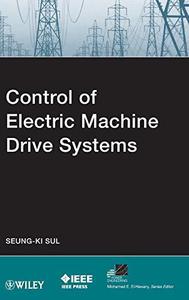
Control of Electric Machine Drive Systems By Seung?Ki Sul(auth.)
2011 | 415 Pages | ISBN: 0470590793 | PDF | 11 MB
A unique approach to sensorless control and regulator design of electric drives Based on the author's vast industry experience and collaborative works with other industries, Control of Electric Machine Drive Systems is packed with tested, implemented, and verified ideas that engineers can apply to everyday problems in the field. Originally published in Korean as a textbook, this highly practical updated version features the latest information on the control of electric machines and apparatus, as well as a new chapter on sensorless control of AC machines, a topic not covered in any other publication. The book begins by explaining the features of the electric drive system and trends of development in related technologies, as well as the basic structure and operation principles of the electric machine. It also addresses steady state characteristics and control of the machines and the transformation of physical variables of AC machines using reference frame theory in order to provide a proper foundation for the material. The heart of the book reviews several control algorithms of electric machines and power converters, explaining active damping and how to regulate current, speed, and position in a feedback manner. Seung-Ki Sul introduces tricks to enhance the control performance of the electric machines, and the algorithm to detect the phase angle of an AC source and to control DC link voltages of power converters. Topics also covered are:Vector control Control algorithms for position/speed sensorless drive of AC machines Methods for identifying the parameters of electric machines and power converters The matrix algebra to model a three-phase AC machine in d-q-n axes Every chapter features exercise problems drawn from actual industry experience. The book also includes more than 300 figures and offers access to an FTP site, which provides MATLAB programs for selected problems. The book's practicality and realworld relatability make it an invaluable resource for professionals and engineers involved in the research and development of electric machine drive business, industrial drive designers, and senior undergraduate and graduate students.To obtain instructor materials please send an email [email protected] To visit this book's FTP siteto download MATLABcodes,please click on this link: ftp://ftp.wiley.com/public/sci_tech_med/electric_machine/ MATLAB codes are also downloadable from Wiley Booksupport Site at http://booksupport.wiley.com Content: Chapter 1 Introduction (pages 1-35): Chapter 2 Basic Structure and Modeling of Electric Machines and Power Converters (pages 36-115): Chapter 3 Reference Frame Transformation and Transient State Analysis of Three?Phase AC Machines (pages 116-153): Chapter 4 Design of Regulators for Electric Machines and Power Converters (pages 154-229): Chapter 5 Vector Control [1 and 2] (pages 230-282): Chapter 6 Position/Speed Sensorless Control of AC Machines (pages 283-323): Chapter 7 Practical Issues (pages 324-353):
E-Books → Contractor's Guide to Green Building Construction Management, Project Delivery, Documentation, and Risk Reduction
Published by: voska89 on 3-08-2022, 23:27 |  0
0
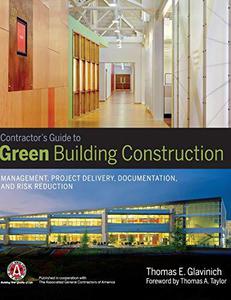
Contractor's Guide to Green Building Construction: Management, Project Delivery, Documentation, and Risk Reduction By Thomas E. Glavinich(auth.)
2008 | 278 Pages | ISBN: 0470056215 | PDF | 8 MB
Written for contractors and endorsed by the Associated General Contractors of America Written specifically for contractors, this "how-to" book enables you to meet the challenges of green building construction. You'll discover how constructing environmentally friendly, sustainable buildings influences project management, delivery, documentation, and risk. Moreover, the book guides you through these important considerations at all phases of a green construction project, including: Bidding and contracting Managing green design when the contractor works as a design builder Subcontracting Procurement Construction management Project commissioning and closeout This book is endorsed by the Associated General Contractors of America (AGC) and was written with the assistance and advice of a specially assembled AGC task force. With a focus on the green building process from the contractor's viewpoint, the book avoids endorsing any one green building rating system in favor of presenting the business fundamentals common to them all. Throughout the presentation, flowcharts and other features offer working tools for successfully managing green construction projects. Plus, real-world case studies developed through discussions with the actual contractors involved help you understand exactly what to expect and how to best manage constructing a green building. In short, this is one book that you need to have on hand to be a part of the rapidly growing green building movement.Content: Chapter 1 Green Construction and the Contractor (pages 1-13): Chapter 2 Elements of Green Construction (pages 15-32): Chapter 3 Understanding Green Project Requirements (pages 33-58): Chapter 4 Contracting for Green Construction (pages 59-76): Chapter 5 Managing Green Design (pages 77-107): Chapter 6 Green Subcontracting (pages 109-130): Chapter 7 Green Procurement (pages 131-162): Chapter 8 Constructing a Green Project (pages 163-188): Chapter 9 Green Project Commissioning and Closeout (pages 189-231):
E-Books → Continuous Direct-Heat Rotary Dryers A Guide to Performance Evaluation, Third Edition
Published by: voska89 on 3-08-2022, 23:26 |  0
0
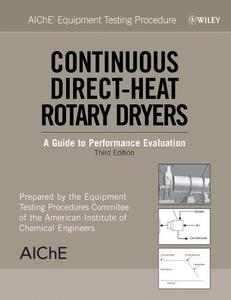
Continuous Direct-Heat Rotary Dryers: A Guide to Performance Evaluation, Third Edition By
2005 | 51 Pages | ISBN: 0471784931 | PDF | 2 MB
The newest edition of the AIChE manual to continuous direct-heat rotary dryersContinuous Direct-Heat Rotary Dryers, Third Edition is the latest text in the AIChE Equipment Testing Procedure series. This new edition continues to provide chemical engineers, plant managers, and other professionals in the chemical process industries with helpful advice about performance evaluation. This text is an indispensable procedural guide with universal applications. With test results computed in both conventional and SI units, this handy resource provides standardized methods, real-world numbers for computer simulations and designs, and a variety of equipment testing practices based on theory, practical experience, and technical know-how. Continuous Direct-Heat Rotary Dryers contains: Two introductory chapters that review dryer descriptions, mechanics, and terms One section devoted to test planning, including testing conditions, dryer material and heat balances, and test preparation Six chapters that discuss rotary dryer instruments and various methods of measure Two sections-for a total of seven chapters-dedicated to computation and interpretation of results Continuous Direct-Heat Rotary Dryers is a handy blend of textbook and manufacturer's literature. This portable text is carefully organized so that the busy professional can easily find the information he or she needs to perform a detailed acceptance test on new equipment, calculate its optimum use, collect accurate data for maintenance, or troubleshoot. In addition to its methods and techniques, this AIChE resource also contains valuable appendixes for nomenclature, sample problem-SI units, sample problem-English units, and general reference. With its engineer-tested procedures and thorough explanations, Continuous Direct-Heat Rotary Dryers is an essential text for anyone engaged in implementing new technology in equipment design, identifying process problems, and optimizing equipment performance.Content:



